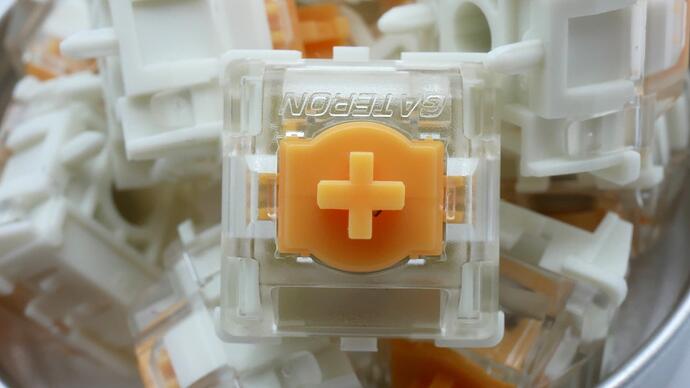Hey all,
After having avoided the subject for far too long, I think it probably is about good time to finally start talking about Hall Effect switches. I couldn’t think of a better switch than the Gateron Dual-Rail Magnetic Oranges to try it on, either, though that is because I didn’t have enough of any other Hall Effect switch to review! In spite of that, enjoy the deep dive both into Hall Effect switches and the current competitive market they’re existing in.
Website: https://www.theremingoat.com/
Article: Gateron Dual-Rail Magnetic Orange Switch Review — ThereminGoat's Switches
Scorecard Repository: GitHub - ThereminGoat/switch-scores: PDF Repository of switch score sheets.
Force Curve Repository: GitHub - ThereminGoat/force-curves: PDF and Data Repository of switch force curves.
Patreon: ThereminGoat | creating Mechanical Keyboard Switch Reviews | Patreon
As always, thank you all for the continued readership and support. I felt like doing some special for my 300th switch scored and what better way to add to it than discussing a type of switch that I’ve somehow avoided for the past handful of years. Hopefully you all enjoy.
Cheers,
Goat 
3 Likes
Awesome write up as always Goat! Gotta say I’m a little surprised at how badly these break in, like you stated Gateron has become quite adept at nailing their more expensive options on the first try. Although we’re talking about traditional MX design there & it seems the changes needed to fit HE components into that MX package are just enough to throw them off their game. Kinda makes me wonder why manufacturers are so intent on forcing Hall Effect components into a MX package TBH? I get that it is familiar to most anybody who has used a mechanical keyboard in the past 20 years. Although if you look into the past Hall Effect switches were already not only used, but pretty well perfected in the form of Honeywell’s & Micro Switch’s magnetic reed, SD, SN, & SW series.
Some of those switches were produced in the 1960s, yet still feel every bit as smooth & good as they did out of the factory (given they were properly cared for). I get that those switches come in a much bigger package (thus raising production costs), but considering the HE ecosystem requires a completely different PCB & parts can not be interchanged with similar MX designs you’d think the manufacturers would think a little more outside the box with HE? Either way very cool to see more innovation in the MKB space! Guess we’ll just have to wait to see where the HE train ends up at.
1 Like
I do think it’s the familiarity - and more specifically, keycap compatibility. My theory is they perceive this as important to customers and/or that it will make transitioning to them more attractive. I will say I do appreciate that about them: I can get into Hall Effect now without having to sacrifice the customization options I’ve been collecting over the years.
Beyond keycap compatibility, I think sticking to the MX form factor also makes it feasible for other components to be shared in keyboard lines - kind of like how the optical versions of GK type keebs share cases and some other parts with their MX counterparts - I think it’s about saving production costs on a broad scale in context of lots of existing MX-friendly tooling and production infrastructure.
I think that might make Gateron (and other companies’ MX-adjacent) Hall Effect offerings more attractive to commercial keyboard producers - if all they have to do is make a new PCB that fits into their existing parts, that’s the only new thing they have to make to have a whole new product line.
2 Likes
Yeah that is some good points you raise there. I wasn’t thinking about it with keycap & case compatibility in mind, mostly just was thinking of pure performance of the switches. Although I would argue the keycap compatibility would be the bigger factor of the two & that could be easily done with a different switch design by just having them use a cruciform mount. Although case compatibility would definitely be hugely affected by the switches being larger. Ultimately though I’d say you are right, catering to usability with existing keycaps & cases is the move to make for overall sales. Even if it does affect the overall performance of the switches themselves.
2 Likes
I don’t have a lot of experience with Magnetic switches. I do own a Wooting 60HE. It came with Lekker switches. I’d rate them a 3/10. I have no idea why they would make a mechanical switch that felt like it didn’t bottom out… but they did.
So, I bought some Gateron Magnetic Jade to replace them. I’d rate them a 9/10. They are some of the nicest sounding and feeling linears that I’ve tried recently. They do have shortened travel, but it’s far and above the Lekker offering.
I guess the orange switches different from the Jade. Because there’s no way they would score that low.
I just checked, I have the first version magnetic jades with the regular stem, not the dual rail.
2 Likes
![]()
